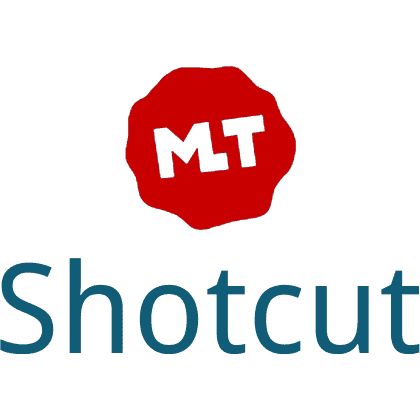
Shotcut Review
Shotcut is a versatile, free, open-source video editor compatible with Windows, Mac, and Linux. It...
Detailed Reviews
Shotcut has quietly grown into one of the most respected free video editors available today. Originally built on the powerful MLT multimedia framework and strengthened by FFmpeg, it combines the stability of an open-source project with the feature set of professional-grade editing software. Unlike entry-level editors that simplify tools at the cost of flexibility, Shotcut remains approachable while offering the sophistication needed for complex, multi-layered productions.
Open-Source Freedom Across Platforms
One of Shotcut's greatest appeals lies in its philosophy. Distributed under the GPLv3 license, it is not just free of charge but also free of restrictions. Users are welcome to use it commercially, install multiple versions side by side, or even run it as a portable application on an external drive. That flexibility is matched by its operating system support: Windows, macOS, and Linux users all enjoy the same complete experience. There are no watered-down versions for certain systems and Shotcut treats all platforms equally.
Performance and System Requirements
Shotcut adapts well to different hardware setups. Even modest systems can handle editing through proxy workflows and preview scaling, while high-performance machines benefit from full multi-core CPU acceleration. Requirements scale logically:
- CPU: 1 core at 2 GHz for SD, 4 cores for HD, 8 cores for 4K.
- RAM: 4 GB (SD), 8 GB (HD), 16 GB (4K).
- GPU: Direct3D 11 (Windows), OpenGL 2.0 (Linux), or Metal (macOS).
This efficiency allows hobbyists and professionals alike to work on projects without constantly worrying about hardware bottlenecks.
Unmatched Format Support
One of Shotcut's strongest assets is its ability to handle virtually any media type. Thanks to FFmpeg, it accepts a staggering variety of formats without pre-conversion. Editors can simply drop files into the timeline and start cutting. Supported features include:
- Video resolutions up to 8K with HDR-to-SDR tone mapping.
- Popular subtitle formats like SRT, VTT, ASS, SSA.
- Modern image formats such as AVIF, WebP, and SVG.
- Transparent video and alpha-channel support.
- Direct webcam, HDMI/SDI, and network stream capture.
This flexibility saves time and eliminates format headaches common in other editors.
Editing Workflow and Interface
Shotcut's user experience manages to feel professional without overwhelming first-time users. The interface is modular, with dockable panels and customizable layouts that adapt to both minimalist and detailed workflows. Its timeline editor provides ripple cuts, three-point editing, and track-level controls such as locking and muting. Visual feedback through waveforms, thumbnails, and markers makes organization straightforward.
Keyboard shortcuts, many borrowed from industry standards like Avid and Final Cut, further enhance the workflow. Editors already trained on commercial suites will find Shotcut's navigation familiar, while newcomers can learn advanced editing techniques without having to switch software down the line.
Creative Depth in Effects and Tools
Shotcut excels in the creative department. Video professionals can rely on a complete color correction suite with three-way wheels, LUT support, and white-balancing tools. For special effects, options range from chroma keying and masking to advanced compositing modes and motion tracking. Artistic filters like vignette, glitch, sepia, and old film offer plenty of stylistic choices, while speed control, freeze frames, and reverse playback extend creative storytelling possibilities.
The audio toolset is just as extensive. Editors can mix surround sound projects, use compressors and equalizers for polish, or apply spatial audio configurations for immersive experiences. Shotcut even allows recording voiceovers directly into the timeline, keeping production fluid. Unlike many free editors that treat sound as secondary, Shotcut gives audio the same professional weight as visuals.
Export and Sharing Capabilities
When it comes to output, Shotcut leaves nothing to chance. Editors can export in a wide range of formats, whether the goal is a YouTube upload, a high-bitrate archival master, or an audio-only track. Presets provide simple one-click solutions, while advanced users can fine-tune parameters for frame accuracy or specialized workflows. Batch exporting allows multiple jobs to run efficiently, and metadata embedding supports chapters or project organization. The export engine, built on FFmpeg, is both fast and precise, ensuring results that match professional expectations.
Stability, Privacy, and Reliability
Shotcut respects user privacy to an uncommon degree. It requires no activation keys, sends no telemetry, and works entirely offline unless a user chooses to access online help resources. For educators, independent creators, and professionals handling sensitive content, this provides a sense of confidence rarely found in free software.
Stability has also become one of its trademarks. Frequent updates address bugs while adding subtle refinements. Cross-platform consistency ensures that editors can switch between operating systems without disruption, and project files remain portable and future-proof.
Final Verdict
Shotcut is not just "good for free" and it is an editor that stands confidently alongside professional-grade software. It combines unmatched format support, thoughtful performance scaling, creative depth, and open-source transparency into a package that is as appealing to beginners as it is to experienced professionals.
It may demand a bit more learning than entry-level tools, but that investment pays off with long-term flexibility and power. For anyone seeking a cost-free yet uncompromising video editor, Shotcut is among the best solutions available today.